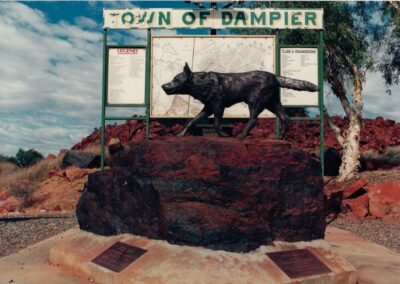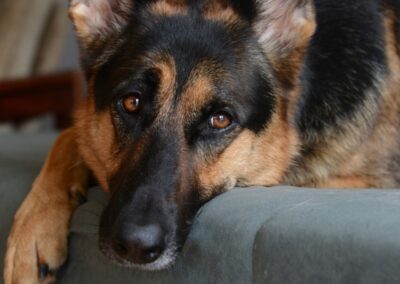
In the dark days of World War II, when fear ruled the seas and hope was in short supply, a place existed for comfort, courage—and fur.
That place belonged to a ship’s dog named Bamse. His story begins far from battle, but ends up woven into the fabric of freedom itself.
A Gentle Giant with a Purpose
Bamse—his name meaning “teddy bear” or “big guy” in Norwegian—was born in 1937 and raised in the fishing-town of Honningsvåg, Norway.
He belonged to Captain Erling Hafto and his family, and even as a pup his devotion showed.
One time, when the family’s youngest daughter was gravely ill, Bamse guarded her bedside for nearly two weeks, allowing only her mother and the doctor to enter the room.
Not heroic in the usual sense, but deeply telling of his character.
Then war came.
When Nazi Germany invaded Norway in April 1940, the family’s whaling vessel, Thorodd, was drafted into the Royal Norwegian Navy. On February 9, 1940, Bamse was officially enlisted as a crew member.
The stage was set.

Duty on Deck
A Saint Bernard aboard a minesweeper might seem odd. But Bamse wasn’t just odd—he was extraordinary.
He donned a steel helmet made just for him, and stood atop the bow gun tower, watching over the ship and its men as if his paws held more than their size implied.
When an officer was attacked by a knife-wielding assailant on the dockside of Montrose, Scotland, it was Bamse who intervened—raised up, shoved the attacker into the water, then barked for help.
Another time a sailor went unnoticed overboard; Bamse dived in, kept them afloat alongside himself until help arrived. Heroism? Tremendous.
But so was his morale-boosting simplicity: he’d break up crew fights by placing his massive paws on their shoulders.
He’d even ride local Scottish buses—alone—wearing his crew pass, to fetch sailors from the pub when curfew hit.
Symbol of Freedom
As the veteran ship moved to UK waters after Norway’s fall, Bamse became more than a mascot. He became a symbol.
A symbol of the Norwegian Free Forces, of Allied companionship, of a small dog standing tall when the world asked him to.
A smiling photograph of him in sailor’s cap spread across Easter and Christmas cards in occupied Europe.
When Bamse passed away on July 22 1944 from heart failure—just a year before war’s end—his funeral in Montrose brought hundreds of sailors, townspeople, schoolchildren and dignitaries.
He was buried with full military honors, his coffin draped in flags, his cap atop the casket.
Legacy That Lives
The honors never stopped. Posthumously, Bamse received the Norges Hundeorden in 1984 and the prestigious PDSA Gold Medal in 2006—remarkably, the only World War II animal awarded that medal.
Statues of him now stand in Montrose and in his hometown of Honningsvåg. Tours and trails honour his path. Children learn his name. Sailors salute when they pass his grave.

Why It Still Matters
In war, humans write body counts. Histories record dates. Monuments sculpt names.
But Bamse’s story shows us something else: loyalty, courage, kindness—even when the world feels huge and hopeless. He reminds us that heroes come in all sizes.
That even a dog can shape morale, carry hope, lift spirits—and on his own paws carry the banner of freedom.
And if you ever doubt what animals remember, what they mean to us—look to the bronze silhouette of Bamse in Scotland, his head tilting upward toward Norway’s horizon.
A dog who once guarded a young girl, then stood guard over the seas of war.
A dog who broke up fights, saved lives and travelled on public transit by himself.
A dog who earned his place, not just beside the crew—but beside history.



